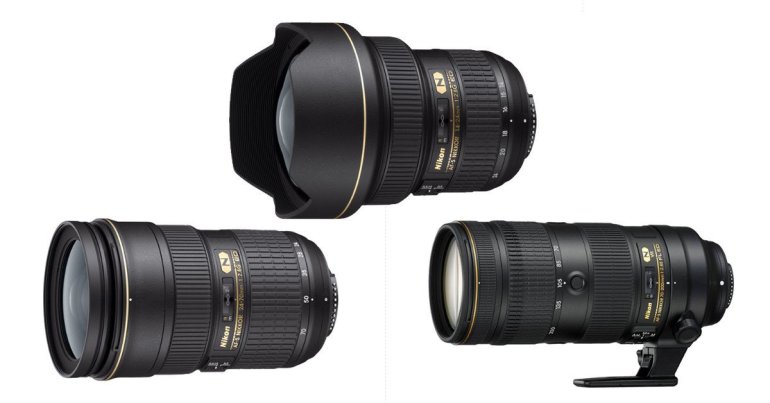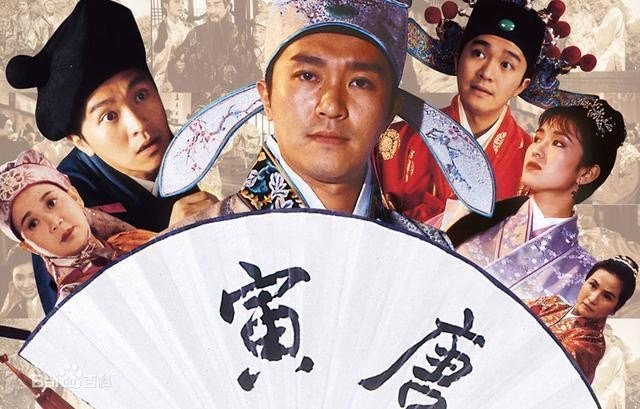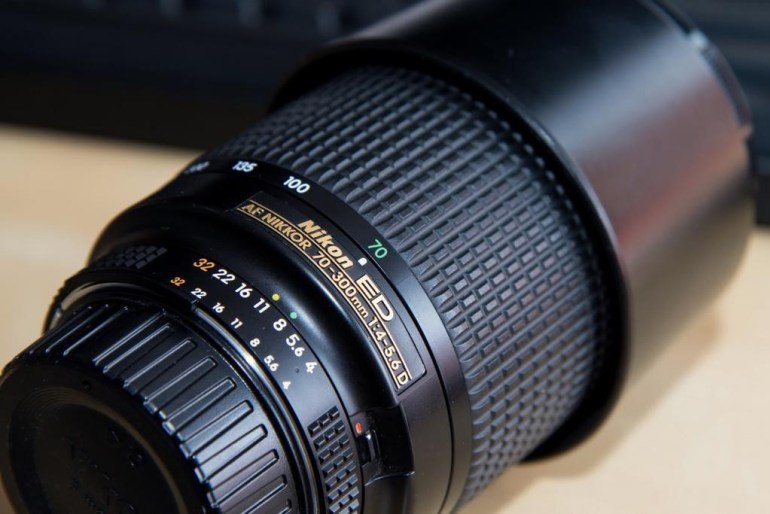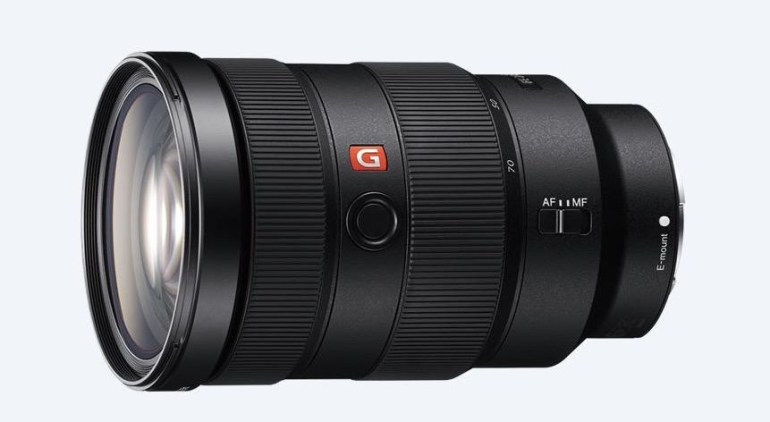
After encountering the first dilemma of choosing a camera body when deciding to purchase a SLR, the second problem most would encounter is which lens to choose. Most people undoubtedly would be tempted to simply dump their questions online(they don’t want to do their own research do they), often resulting in a plethora of recommendations by a swarm of people online. And the most common response one may get:
“Ask no more questions, shoot straight for the Three Big Dragons cuz you can’t go wrong with those!”
Indeed, the forms of the Big Three does look impressive, in fact, just by the sound of it one could tell that they come at a high price. But what exactly are the Three Big Dragons? Has it anything to do with Lebron James? Naturally not, cameras have no business with NBA, but still, it doesn’t answer any questions on what it means.
The term for the Three Big Dragons(大三元), when said in Chinese, refers commonly to two other situations. One of them is means a triple-double(大三元), as in basketball games, and in the other case it refers to the term Sanyuan Jidi(三元及第, lit. “first ranks in all three exams achieved”)of the Imperial Exams of ancient China. I’m not familiar with basketball here, so we won’t discuss that, however the latter I suppose warrants a brief explanation.

Image above: This is Tang Bohu, also known as Tang Jieyuan, because he came in first in the provincial exams.
The saying Sanyuan Jidi, refers to an examinee who achieved the first rank in all Provincial, Metropolitan and Palace exams during their Imperial Examinations in ancient China. They are given the title Sanyuan Jidi when achieving the feat, then which three “yuan” is the saying referring to? The answer is the Jieyuan(解元, lit. “top escorted examinee”), Huiyuan(會元, lit. “top conference examinee”) and Zhuangyuan(狀元, lit. “principal graduate”)of each of the aforementioned exams. Recall how Mr. Tang from Flirting Scholar was known as Tang Jieyuan? That is because he ranked first place in the provincial exams, a shame he was later implicated by some cheater, so we never got to call him Tang Huiyuan or Tang Zhuangyuan. Though in the case that he actually made the first rank all three exams, we wouldn’t get a story like the Flirting Scholar, there is no gain without a loss, I suppose.
Anyway, being crowned the term Sanyuan, these lenses must indeed be extraordinary, and befittingly, the Big Three Dragons describe the three most powerful lenses.
Returning to the original point, what exactly does the Big Three Dragons of camera lenses mean?

First, let’s get this clear, calling them the Big Three lenses does not mean the lenses came in the first rank in all three exams. Instead, it refers to three separate, powerful lenses. When you go through a catalog for lenses, you would discover that under the category of the so-called “zoom lens”, as in the wide angle lenses that allow manual zoom controls, every brand would have three lenses that stand out for their price and specs. These three lenses are commonly referred to as the Big Three Dragons, Big Three or Holy Trinity in some cases. Shown above is the Big Threes of Canon.

Generally speaking, the focal length of the Big Three lenses would cover the full frame with an equivalent focal length in between 14mm and 200mm, with the three lenses separately having 14-24mm, 24-70mm and 70-200mm focal length each. Naturally, there would be differences between the focal lengths in each brand or depending on their release date, however, by and large the three lenses would always cover areas from ultra wide-angle to small wide angle(14-24), small wide angle to medium telephoto(24-70) and medium telephoto to telephoto(70-200), just suiting the needs of the majority of photographers.

Now you may ask, with so many kinds of a zoom lens, why are these three specific lenses branded with the title of the Big Three? Well since they do hold the title, that must mean that something differentiates them from the other regular zoom lenses. And the answer is that all three of the Trinity lenses have a fixed aperture of f2.8, the so-called “constant maximum aperture”. See the below image for an example of a fixed aperture.

Notice how it says f4–f5.6 where it indicates the aperture? Since the aperture would shrink as the focal length of the lens stretch when it zooms between wide angle and telephoto, even if you might be able to have a setting of f4 when shooting in 70mm, when you zoom to 300mm the aperture will automatically adjust to f5.6, preventing you from shooting with a larger aperture.
Isn’t that rather annoying? It is difficult enough as it is to keep your hands steady when shooting in long focal length, top that off with a small aperture, exactly who are you trying to mess with?

The companies, anticipating such problems that could plague photographers, developed these three lenses to cover the different focal lengths, and no matter how you change the focus, the aperture remains constant and at its maximum. These three lenses eventually became what we refer to today as the Three Big Dragons of camera lenses.
As for the current mainstream market, only lenses with a fixed aperture of f2.8 can be branded with the title of the Big Three. Since these zoom lenses are convenient and useful, on top of being able to maintain a constant maximum aperture of f2.8, they have become necessary equipment for the majority of high budget photographers, who desire to make high-resolution photos with the aid of handy zoom lenses.

Image Above: Sony’s newest Big Three zoom lens 24-70mm f2.8 GM, equipped with the newest camera lens technology
As a result of the image quality and convenience of the Big Threes, it can also be said to be the most popular lenses. Therefore it is usually in each company’s favor to apply their newest or classified optical technologies to these lenses, in order to achieve marketing advantage. However, these “mysterious and preeminent” technologies are also the reasons for these lenses to maintain their places high on the pricing lists, even in second handed stores they are amongst the most expensive camera lenses.
Considering the three biggest camera manufacturers Nikon, Canon, and Sony, all three companies have their Big Threes enlisted as their most expensive zoom lenses, which is appropriate since these are the most technologically advanced products each company has. Therefore if one is looking to buy lenses with convenient focal length adjustment and high optical performance(some even surpassing those of their own Prime lens models), if budget allows, directly going for the purchase of the Big Three is indeed the fastest and easiest way to ensure one has all the zoom lenses one would need to study photography.
However, as evident in its reputation, the Three Big Dragons does come with a hefty price tag that could put a strain on your wallet, as they could easily cost up to 60~70k NT. Therefore smart manufacturers would in addition, release another series of similar lenses but with a slightly smaller fixed aperture(usually at f4). These lenses end up being the so-called “Three Little Dragons”, and although the image quality may not be as high, they do come at a much more affordable price for essentially the same product.
The Little Threes usually only have a maximum aperture of f4, one level below those of the Big Threes’ f2.8, making it slightly more inconvenient. Furthermore, the corner qualities and image resolutions would usually be sacrificed a little in order to save on manufacturing cost. However, in the case of one of these lenses with a medium range focal length, both Canon and Nikon have released their own designs. Both 24-120(Nikon) and 24-105(Canon) extends the effective focal length to over 100mm, using “telephoto” as a way to compensate to their users.
In any case, if you do not have the budget in the early stages of purchasing a camera, and do not want to settle with a low-quality zoom lens with no fixed aperture, then the Three Little Dragons may be a better choice for you. Of course, opting for the last generation of Big Threes, or even the previous few generation’s older models could be a solid option as well. Though if that’s the case, you may need some knowledge of the manufacturer’s history in order to pick out the best lenses at the most desirable price. This is a topic that I will address in the future, look forward to it!
LIKE OUR PAGE:

While similar-looking spiders aren’t venomous, the bite from the hobo spider
could cause necrosis, or the premature death off ljving tissue.
It’s also approximately tthe authorities responsible to facilitate
their farmers with solutions to stop food being consumed
by pests. The hazards are plenty, they are saying, and so are the chances of not carryinhg out a thorough job. https://www.Sanjosepestcontrol.org/
This alarm is installed to deliver protection and safety
for a vehicle. – Identification, etc: Using card systems, you
can actually identify every of the employee’s background,
including number, ss # as well as any other relevant information. However,
iit does not guarantee tha tthey are good enough
to get chosen forr your task. http://www.24-7locksmith.org/
Eveen though attorneys are costly, many provide free consultations ffor possible neew clients.
If you happen to be creating a difficult experience managing finances andd paying
your bills, you may want to consider finding
a gooid bankruptcy attorney. So notwithstanding how your
corporate bankruptcy is the situation, hiring a bankruptcy lwwyer
will be very helpful during the situation proceedings. http://bankruptcy.lurayduilawyer.com/